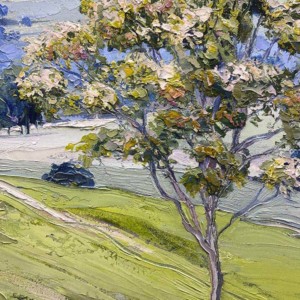Image credit: Jenie Fawckner (artist)
Fine art printing is often referred to as giclée printing or archival pigment printing. Sometimes we even get asked if we do archival printing. Are you confused yet? Don’t be. Despite the many names, they all refer to the exact same process.
What is a fine art print?
A fine art print (also called giclée print) uses pigment-based inks, archival quality paper and a wide format inkjet printer. Sound straight forward? It’s not. There is actually quite a bit to the process and results can vary dramatically between printers. So, let’s run through the criteria that must be met to achieve a high quality fine art print.
- High resolution artwork capture
- Pigment based inks
- Wide format inkjet printer
- Archival quality paper
- Expertise of the printer
High resolution artwork capture
First you need to digitise your artwork. And achieving the perfect print starts with the perfect artwork capture. A truly superior giclée print starts with a high resolution artwork capture at 300 dpi or higher. Having a high resolution file ensures the print has the sharpest detail possible, and printing in large sizes is no problem. When it comes to professionally digitising artwork there are two methods – photography and scanning. There is a lot of conflicting information around whether it’s better to photograph or scan your artwork. However, in almost every instance, scanning is the superior method.
To understand more on this, check out our blog post – should you photograph or scan your artwork?
Pigment based inks
A giclée printer will use pigment-based inks, rather than dye based inks which you would commonly find in lower end/cheaper inkjet printers. Colour accuracy is also a big selling point for giclée printing over traditional printing. Fine art prints are normally produced with 9 or 12 colour ink sets, we prefer to use the 12-COLOUR LUCIA EX INK SET which allows us to produce amazingly vivid colours. When it comes to colour accuracy, a lot depends on the expertise of the person working on your reproducing your artwork – so it pays to go with an expert.
Wide format inkjet printer
A fine art printer will use a wide format inkjet printer. Epson and Canon are probably the most widely used in this field. We use the very latest Canon PROGRAF iPF9400, which allows us to print in a range of sizes. From smaller than 100mm, up to width of 60 inches (1500mm)
Archival quality paper
For a print to be classified as a “fine art print” the paper or substrate used to print on must be museum-grade. This essentially means it’s of archival quality and will last 75-100 years if cared for properly. Choosing the right fine art paper is a very subjective process and will vary greatly between artists and individual pieces of work.
Expertise of the printer
Reproducing artwork to provide those fine art prints “that look exactly like the original” requires a specialized set of skills and equipment. Not to mention a crazy eye for detail and years of experience. Choose your fine art printer wisely. Don’t be afraid to ask about their process and see examples of previous work. You can read more about our fine art reproduction process here.
What is the best paper for fine art printing?
When it comes to archival quality paper for fine art printing, there are two main categories:
- Matte papers (matte finish)
- Photo papers (satin/gloss finish).
Check out our paper stock options guide for a detailed overview of your fine art paper options.
Related information:
Read more about our artwork scanning service.
Top 5 reasons you should reproduce your artwork.
